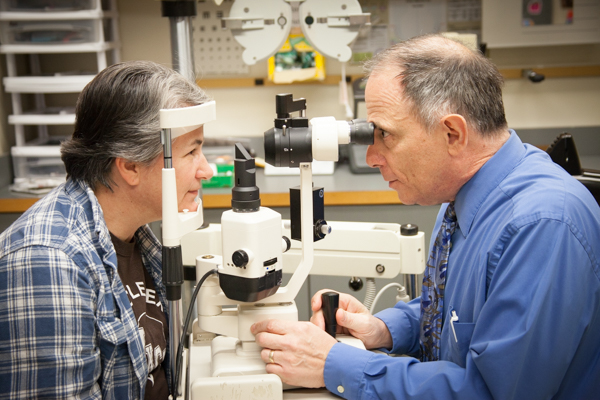Specialized Retina Service Near Me: Top-Notch Eye Treatment Professionals
Specialized Retina Service Near Me: Top-Notch Eye Treatment Professionals
Blog Article
The Duty of Advanced Diagnostic Equipment in Identifying Eye Disorders
In the world of ophthalmology, the application of advanced diagnostic devices has actually revolutionized the early identification and administration of numerous eye disorders. As the demand for accurate and prompt medical diagnoses proceeds to expand, the integration of advanced tools like optical comprehensibility tomography and aesthetic area screening has actually come to be essential in the realm of eye care.
Value of Very Early Medical Diagnosis
Very early medical diagnosis plays a pivotal role in the effective management and treatment of eye conditions. Timely identification of eye conditions is important as it enables timely treatment, possibly stopping additional development of the illness and lessening long-lasting issues. By identifying eye problems at a beginning, doctor can supply ideal therapy strategies tailored to the particular condition, ultimately leading to better end results for people. In addition, very early diagnosis allows patients to access essential assistance solutions and resources sooner, improving their total lifestyle.

Modern Technology for Identifying Glaucoma
Cutting-edge diagnostic technologies play a vital duty in the very early discovery and monitoring of glaucoma, a leading source of permanent loss of sight worldwide. One such modern technology is optical comprehensibility tomography (OCT), which offers comprehensive cross-sectional photos of the retina, enabling the dimension of retinal nerve fiber layer density. This dimension is necessary in evaluating damages brought on by glaucoma. Another innovative tool is aesthetic field testing, which maps the level of sensitivity of a person's visual field, assisting to spot any locations of vision loss attribute of glaucoma. Furthermore, tonometry is made use of to measure intraocular pressure, a significant threat aspect for glaucoma. This test is essential as elevated intraocular pressure can bring about optic nerve damages. Moreover, more recent modern technologies like the usage of expert system formulas in analyzing imaging data are showing encouraging results in the early discovery of glaucoma. These innovative analysis tools enable eye doctors to detect glaucoma in its beginning, permitting prompt intervention and far better monitoring of the disease to stop vision loss.
Function of Optical Coherence Tomography

OCT's capability to measure retinal nerve fiber layer density allows for accurate and unbiased dimensions, assisting in the early detection of glaucoma even before visual area flaws emerge. Moreover, OCT modern technology allows longitudinal monitoring of structural modifications gradually, promoting individualized therapy strategies and timely treatments to help protect clients' vision. The non-invasive nature of OCT imaging visit this website likewise makes it a favored selection for keeping an eye on glaucoma development, as it can be repeated regularly without triggering pain to the person. In general, OCT plays an essential function in boosting the diagnostic accuracy and monitoring of glaucoma, inevitably adding to far better results for individuals at risk of vision loss.
Enhancing Diagnosis With Visual Area Testing
A crucial component in comprehensive ocular evaluations, aesthetic area testing plays an essential function in boosting the diagnostic procedure for different eye problems. By examining the full degree of a client's visual look at this website area, this examination provides critical details about the functional integrity of the entire aesthetic pathway, from the retina to the visual cortex.
Visual field screening is particularly beneficial in the medical diagnosis and management of problems such as glaucoma, optic nerve problems, and various neurological illness that can impact vision. Via quantitative measurements of peripheral and main vision, clinicians can find subtle changes that might suggest the presence or development of these problems, even prior to obvious symptoms occur.
Additionally, aesthetic area screening permits the tracking of treatment efficacy, aiding ophthalmologists customize therapeutic interventions to private people. eyecare near me. By tracking modifications in visual area performance in time, medical care service providers can make enlightened choices regarding adjusting medications, suggesting medical interventions, or carrying out other proper measures to maintain or improve a client's aesthetic function
Managing Macular Degeneration

Conclusion
In verdict, advanced analysis devices play a vital duty in recognizing eye disorders early on. Technologies such as Optical Comprehensibility Tomography and visual field testing have significantly enhanced the accuracy and performance of diagnosing problems like glaucoma and macular deterioration.
Report this page